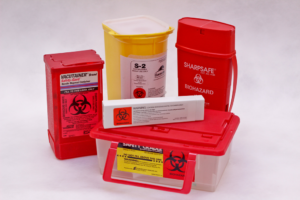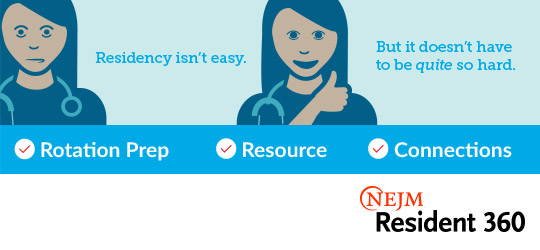September 19th, 2018
I Was Nearly Kicked Out of the Cafeteria
Scott Hippe, MD
The nature of the crime? Bringing my reusable food container down for meals. I just wanted to avoid the Styrofoam plates and plastic silverware, but the lunch ladies were convinced I was asking for two portions’ worth of side dishes and then only paying for one. I wasn’t, although I admit to once sprinkling cheese from the salad line on my soup [gasp!]. But by that time, I already had a large target painted on my scrubs.
My innocent food container — my small attempt at being mindful of waste — was barred from the cafeteria. The exclusion sent a clear message: Eat on our single-use plates, or do not eat at all. Coming from the same organization that tosses all the contents from its recycling bins into the landfill, I shouldn’t have been surprised.
My cafeteria episode apparently was a big deal in the world of hospital food preparation. One of the cafeteria supervisors sent a message straight to my program director. “Your resident isn’t coloring inside the lines,” was essentially how it read. No matter how trivial the issue, having to explain yourself to your program director is obviously undesirable.
Medical waste is a bigger problem than you might realize
Our medical-industrial complex exerts a significant negative effect on the environment. I am likewise not impressed by the degree to which healthcare contributes to pollution. A 2016 study reported that 9.8% of national greenhouse gas emissions are attributable to the healthcare sector (PLoS One 2016; 11:e0157014). For reference, the study authors explain this amount of emissions supersedes total emissions from all but the thirteen highest-producing countries worldwide.
significant negative effect on the environment. I am likewise not impressed by the degree to which healthcare contributes to pollution. A 2016 study reported that 9.8% of national greenhouse gas emissions are attributable to the healthcare sector (PLoS One 2016; 11:e0157014). For reference, the study authors explain this amount of emissions supersedes total emissions from all but the thirteen highest-producing countries worldwide.
The problem is bigger than just greenhouse gasses. Medical waste takes up space in landfills. Healthcare practices create chemicals that are carcinogenic to humans and toxic to the environment. Particulates generated by hospitals and by production of medical goods are spewed into the air. All of these things have implications to the health of the patients we are supposed to be helping.
What can be done?
With a last name like Hippe, I had best not get too far out in left field on environmental issues. Clearly, some amount of energy has to be devoted to powering our facilities and providing health services. But, “how much energy?” is the important question. In my opinion, we can be doing much better.
There are many levels on which the discussion of environmental health needs to occur, from top tiers of hospital administration down to each individual person. The environmental impact of our activities needs to be highlighted at the organizational level, but lofty aims like this are not readily accessible for the majority of healthcare personnel.
If you find yourself just trying to survive from one day to the next (cough, I’m talking to you, fellow residents, cough) rather than participating in high-level policy discussions, a more realistic place to start might be to decrease your personal waste. Use a coffee mug rather than disposable cups. Stop using sterile gloves for minor skin procedures, because they are associated with no difference in infection rates. (Wash your hands!) Among acceptable surgical techniques, choose the one that employs the least amount of single-use equipment. Save trees by writing concise hand-off reports.
I would be curious to hear other ideas about how you have individually reduced environmental waste, and any inspirational facility-wide policies that have been successful at your institutions.
Lastly, for the truly brave folks out there: Bring your own dish down to the cafeteria — but watch out for the lunch ladies!




Keeping our environment clean, as un-polluted as possible, and conserving resources does not make one a “Hippe” nor has it ever been a partisan issue. It’s smart, prudent, and yes, it saves money. It’s a cultural thing, people still buy disposable 16oz. water bottles (why??) and throw away disposables after one use. It’s a generational issue, and we need to bring it to our own attention. Keep up with your efforts!
Teach hospital executives, who are paid by you, how to do basic math.
Those single use suture trays? They may cost $X to procure, but if that is the only figure your management team is making, replace the management team.
You do not save on cleaning and sterilizing high quality multiple-use instruments unless and until you fire staff and don’t purchase an autoclave. and let’s not even go tot he needle holders that permit the suture needle to spin…
But those of us who bought cheap tools to do a critical car repair only to lose the skinning on our knuckles or had to pay a real mechanic to remove that rounded off bolt head already know this.
Remember, because they have a lot of letters after their names does not mean they know what they’re doing. but you already know that, too.
Have a little empathy, Doc. Cafeteria staff cannot use their utensil to touch your container (a vessel of unknown cleanliness), then proceed to dip said utensil back into the general public’s food and serve the next person in line.
If you cannot connect those rather elementary-level dots, I definitely don’t want you diagnosing and treating me.
If the cafeteria staff had accused him of being unsanitary, then sure, he deserves the complaint. But their accusation was that he was trying to scam them out of an additional serving, which is not what he was doing. Try again.
Nancy–
I appreciate the comment. There are many specifics in the cafeteria that are beyond me. I think there’s a balance between needing cleanliness and respecting the environment. If my cafeteria used real plates and silverware this problem would cease to be an issue, but obviously it is more complicated than just snapping fingers and having a change like that be made. I have been dropping salad contents in my bowl without touching my own stuff, but will be extra careful from here forward.
Thank you for posting this! I avoid our cafeteria because you can’t make it through without multiple styrofoam and plastic containers. I have thought so often of just bringing my own but I’ve been reluctant to exactly out of concern for this situation starting. But maybe I will give it a try (and see what my PD has to say about the emails he gets down the line 😉 ).
This has been a sore topic with me for years. Although I have been in practice 35 years since graduation from the Family Medicine Residency in Boise I still could not help but comment. I still use glass syringes for local injections and good reusable quality instruments for procedures. All autoclave well and are much nicer to use. I personally recycle paper from the office w/o HIPPA info on it. Print double sided if possible. The plastic one time use stream is abhorrent!
I appreciate Dr. Hippe sharing and thereby encouraging us all to be mindful about waste (I also take my own container to catered lunch meetings!). And yes, we should work toward reducing both institutional and individual waste. Even if our individual efforts seem small, if each of us reduced some of our waste, the net gain for all of us will be big! Let us remember that plastic takes more than 450 years to decompose and ends up in the landfill and inside oceans and inside marine animals killing them (https://www.npr.org/2018/06/06/617213676/in-thailand-17-pounds-of-plastic-kills-whale-highlighting-ocean-pollution).
The waste created by single use items in our society today causes more problems than many people realize. There is a huge plastic floating “island” out in the Pacific Ocean. The tiny plastic particles are now in all the seafood we eat. I graduated from Med School 50 years ago. Back then all procedure sets were reusable, with real metal instruments. This included lumbar puncture sets, suture sets, tracheostomy sets, etc. In my own office we used steel vaginal specula because the plastic ones only came in one size and the lighting device they used was inadequate compared to my head mirror + exam lamp. I always used Littauer or Spencer suture removal scissors because those plastic devices were nearly impossible for use on tiny skin sutures. There is a partial solution but it won’t work in the US because of regulations. While in Cambodia we used to get unused, but still in sterile packages, materials from the US. They were brought to us by an NGO: IV sets, sterile 10cc syringes with saline for irrigating IV’s, infant diapers, BP cuffs, ambubags, bandages. All had been destined for the trash in the US. The ER and ICU got old monitors that still functioned but weren’t the latest model. Years ago paraldehyde was used in the ER to treat persons with alcohol withdrawal. A nurse put some in a plastic medicine cup instead of glass and the plastic cup melted! More recently I treated my leg ulcer with the old Unna Boot. Had to order the bandage on-line because it’s unavailable at surgical suppliers . I reuse compression bandages over it. Yes this is messy, but it’s very effective and a lot cheaper than the fancy hydro-colloid patches sold in the local drug stores or used in the hospitals.